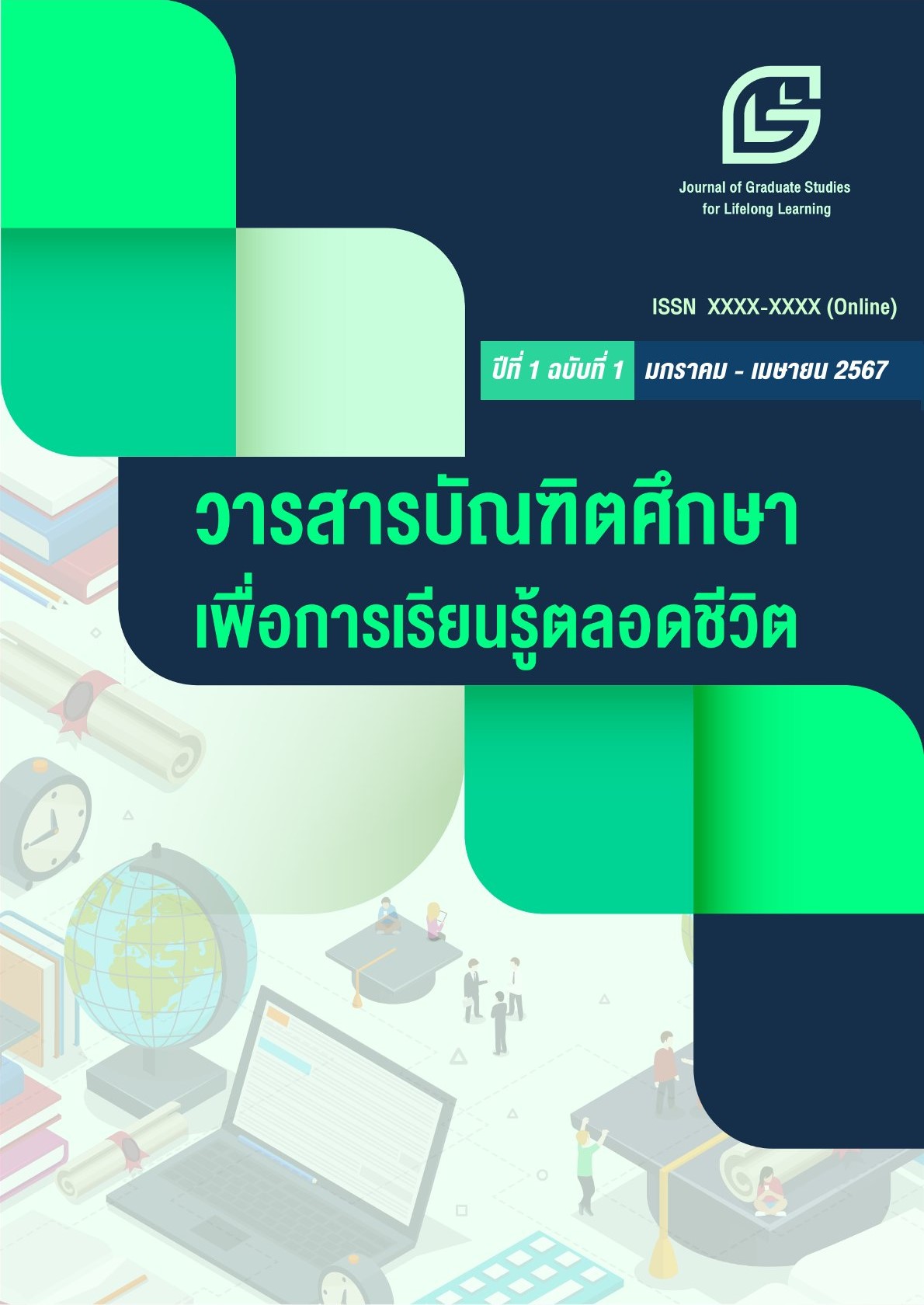Participation of Village Health Volunteers in the Prevention and Resolution of Drug Addiction Problems in the Community
Main Article Content
Abstract
The objectives of this cross-sectional descriptive research were to study : 1) the level of participation in the prevention and resolution of drug addiction problems in the community; 2) Factors supporting the participation of public health volunteers in the prevention and resolution of drug addiction problems in the community; 3) Compare the participation of public health volunteers in preventing and solving drug problems in the community. Classified based on individual factors and supporting factors.
The study population was village health volunteers living in Ao Luek district, Krabi Province. The sample consisted of 255 people. Data were collected using a questionnaire and then analyzed using a t-test and a one-way ANOVA, with testing paired by least significance difference (LSD) method.
The research results indicated the following: the participation of village health volunteers in the prevention and resolution of drug addiction problems in the community is low level (M= 1.93, S.D.= 0.43). Receiving information and equipment for drug training and having different experiences working with drugs. had a significant difference in participation in the prevention and resolution of drug addiction problems in the community (p< .05). Guidelines for promoting the participation of village health volunteers in the prevention and resolution of drug addiction problems in the community. There should be a campaign for village health volunteers. People are more aware of the dangers of drugs and support training to receive information about drugs and prevention.
Article Details

This work is licensed under a Creative Commons Attribution-NonCommercial-NoDerivatives 4.0 International License.
References
กรวิทย์ เกาะกลาง, วินิจ ผาเจริญ และวัชระ ชาติมนตรี. (2564). การมีส่วนร่วมของประชาชนในการป้องกันและแก้ไขปัญหายาเสพติด กรณีศึกษาเขตพื้นที่องค์การบริหารส่วนตำบลสนามชัย อำเภอสตึก จังหวัดบุรีรัมย์. วารสารสันติสุขปริทรรศน์, 2(1), 1-11.
กระทรวงยุติธรรม, สำนักงานคณะกรรมการป้องกันและปราบปรามยาเสพติด. (2565). แผนปฏิบัติการด้านป้องกันและปราบปรามยาเสพติด พ.ศ.2565. สถาบันบำบัดรักษาและฟื้นฟูผู้ติดยาเสพติดแห่งชาติบรมราชชนี (สบยช.), http://www.pmnidat.go.th/thai/downloads/serviceplan/SP02-65.pdf.
กัมพล เพ็ชรล้อมทอง และธนัสถา โรจนตระกูล. (2565). การมีส่วนร่วมของเครือข่ายภาคประชาชนในการป้องกันและแก้ไขปัญหายาเสพติด. กรณีศึกษาตำบลลำประดา อำเภอบางมูลนาก จังหวัดพิจิตร. Journal of Modern Learning Development, 7(5), 92-104.
คลังข้อมูลการแพทย์และสุขภาพ กระทรวงสาธารณสุข. (2565). Health Data Center: HDC. กระทรวงสาธารณสุข.
พระมหาฉัตรเพชร สมาจาโร. (2566). การมีส่วนร่วมของผู้นำชุมชนในการป้องกันและแก้ไขปัญหายาเสพติดในพื้นที่ตำบลหลุบ อำเภอเมือง จังหวัดกาฬสินธุ์. วารสารสังคมศาสตร์และศาสตร์รวมสมัย, 4(1), 30-41.
สำนักงานยุติธรรมจังหวัดกระบี่. (2566, 15 กุมภาพันธ์). สยจ.กระบี่.ลงพื้นที่ให้ความช่วยเหลือกรณีชายเสพยาคลุ้มคลั่ง. กองประสานราชการยุติธรรมจังหวัด, https://www.moj.go.th/view/81019.
อธิพงษ์ ตันศิริ. (2560). การมีส่วนร่วมของประชาชนในการป้องกันและแก้ไขปัญหายาเสพติด ศึกษากรณี อำเภอแกลง จังหวัดระยอง [วิทยานิพนธ์ปริญญามหาบัณฑิต ไม่ได้ตีพิมพ์]. มหาวิทยาลัยบูรพา.
อภิญญา ก้อเด็ม และอิกบาร์น ราซีด. (2565). การมีส่วนร่วมของประชาชนในการแก้ไขปัญหายาเสพติดในจังหวัดนราธิวาส. วารสารสภาการสาธารณสุขชุมชน, 4(3), 56-68.
อัมพร ภูแก้ว. (2556). การมีส่วนร่วมของประชาชนในการแก้ไขปัญหายาเสพติดในพื้นที่เทศบาลตำบลพลวง อำเภอเขาคิชฌกูฏ จังหวัดจันทบุรี [วิทยานิพนธ์ปริญญามหาบัณฑิต ไม่ได้ตีพิมพ์]. มหาวิทยาลัยบูรพา.
United Nations Office on Drugs and Crime. (2022). Executive summary / Policy implications. https://www.unodc.org/res/wdr2022/MS/WDR22_Booklet_1.pdf.
Daniel, W.W. (2010). Biostatistic:Basic Concepts and Methodology for health Sciences (9th ed.). John Wiley & Sons.
Bloom, B.S. (1971). Taxonomy of education objective: The classification of educational goals: Handbook II: Affective domain. David McKay.
Cohen, J.M., & Uphoff, N.T. (1982). Effective Behavior in Organizations. Richard D. Irwin.
Likert, R. (1967). The Method of Constructing and Attitude Scale. Attitude Theory and Measurement. Wiley & Son.


